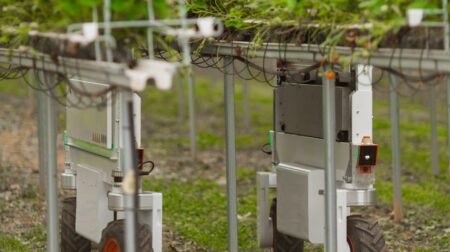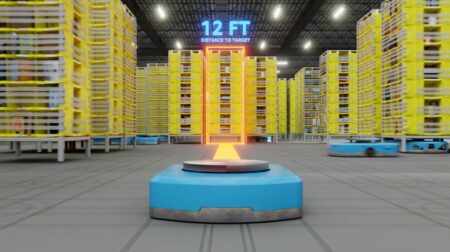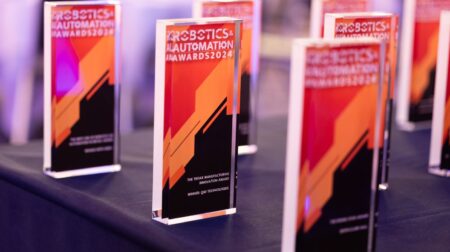A team from MIT’s Computer Science and Artificial Intelligence Laboratory (CSAIL), in collaboration with Ava Robotics and the Greater Boston Food Bank (GBFB), has designed a new robotic system that disinfects surfaces and neutralises aerosolised forms of Covid-19.
The approach uses a custom UV-C light fixture designed at CSAIL that is integrated with Ava Robotics’ mobile robot base. According to researchers, the results have been encouraging enough that the approach could be useful for autonomous UV disinfection in other environments, such as factories, restaurants, and supermarkets.
UV-C light has proven to be effective at killing viruses and bacteria on surfaces and aerosols, but it’s unsafe for humans to be exposed. However, Ava’s telepresence robot doesn’t require human supervision. Instead of a telepresence top, the team subbed in a UV-C array for disinfecting surfaces.
Specifically, the array uses short-wavelength ultraviolet light to kill microorganisms and disrupt their DNA in a process called ultraviolet germicidal irradiation. The complete robot system is capable of mapping the space — in this case, GBFB’s warehouse — and navigating between waypoints and other specified areas.
In testing the system, the team used a UV-C dosimeter, which confirmed that the robot was delivering the expected dosage of UV-C light predicted by the model.
“Food banks provide an essential service to our communities, so it is critical to help keep these operations running,” said Alyssa Pierson, CSAIL research scientist and technical lead of the UV-C lamp assembly. “Here, there was a unique opportunity to provide additional disinfecting power to their current workflow, and help reduce the risks of Covid-19 exposure.”
During tests at GBFB, the robot was able to drive by the pallets and storage aisles at a speed of roughly 0.22mph. At this speed, the robot could cover a 4,000ft2 space in GBFB’s warehouse in half an hour. The UV-C dosage delivered during this time can neutralise approximately 90% of coronaviruses on surfaces. For many surfaces, this dose will be higher, resulting in more of the virus neutralised.
“Our 10-year-old warehouse is a relatively new food distribution facility with AIB-certified, state-of-the-art cleanliness and food safety standards,” said Catherine D’Amato, president and CEO of the Greater Boston Food Bank. “Covid-19 is a new pathogen that GBFB, and the rest of the world, was not designed to handle. We are pleased to have this opportunity to work with MIT CSAIL and Ava Robotics to innovate and advance our sanitation techniques to defeat this menace.”
Within GBFB, the team identified the warehouse shipping floor as a “high-importance area” for the robot to disinfect. Each day, workers stage aisles of products and arrange them for up to 50 pickups by partners and distribution trucks the next day. By focusing on the shipping area, it prioritises disinfecting items leaving the warehouse to reduce Covid-19 spread out into the community.
Currently, the team is exploring how to use its onboard sensors to adapt to changes in the environment, such that in new territory, the robot would adjust its speed to ensure the recommended dosage is applied to new objects and surfaces.
When the robot is deployed, it doesn’t necessarily know which of the staging aisles will be occupied, or how full each aisle might be. Therefore, the team noted that they need to teach the robot to differentiate between the occupied and unoccupied aisles, so it can change its planned path accordingly.
“As we drive the robot around the food bank, we are also researching new control policies that will allow the robot to adapt to changes in the environment and ensure all areas receive the proper estimated dosage,” said Pierson. “We are focused on remote operation to minimise human supervision, and, therefore, the additional risk of spreading Covid-19, while running our system.”
For immediate next steps, the team is focused on increasing the capabilities of the robot at GBFB, as well as eventually implementing design upgrades. Their broader intention focuses on how to make these systems more capable at adapting to the world.
For example, the team is exploring how a robot can dynamically change its plan based on estimated UV-C dosages, how it can work in new environments, and how to coordinate teams of UV-C robots to work together.
CSAIL director and project lead, Daniela Rus, said that the insights received from the work at GBFB has highlighted several algorithmic challenges. “We plan to tackle these in order to extend the scope of autonomous UV disinfection in complex spaces, including dorms, schools, airplanes, and grocery stores.”







